Fall in Love with Your Clothes Again
When your wardrobe resembles the Next Boxing Day sale with clothes spilling out all over the place, it’s easy to feel like you have ‘no clothes’. The reality is that you have no clothes you WANT to wear. With our easy how to guide on how to organise a more beautiful wardrobe, you’re well on your way to falling in love with your wardrobe all over again.
1. Out of Sight, Out of Mind
I always show my clients that if they can hang up the majority of their clothes then they will be more likely to use them, so my advice is to use drawers for underwear, nightwear, lounging around and sports clothing, and garments that are out of season. That way you will have plenty of space to hang everything that you can wear today and will have more choice in your daily wardrobe. It’s surprising at how my clients find all sorts of great pieces they had completely forgotten about because they had put them away in a drawer.
You should now be left with a wardrobe full of clothes that you can make outfits with TODAY! It’s get real time ladies. This is actually what you have to work with now, today. This is what you really have to wear. Perhaps there’s more than you thought? Maybe there’s nothing left in there but 23 pairs of jeans. Either way, we’ve got real and established a starting point.
2. Visual Merchandising
However don’t stop there. Give your wardrobe the respect it deserves and add (psychological) value to your clothing by organising it beautifully to make it more appealing to you. Like I said, it’s all about visual merchandising and giving yourself the feeling each day that your clothes and your image are really worth something – you are worth something.
Make yourself want to buy into your wardrobe like it was your favourite shop. Have fun with it! You might even find that this is a great way to treat your clothes practically too, as they’re bound to last much longer!
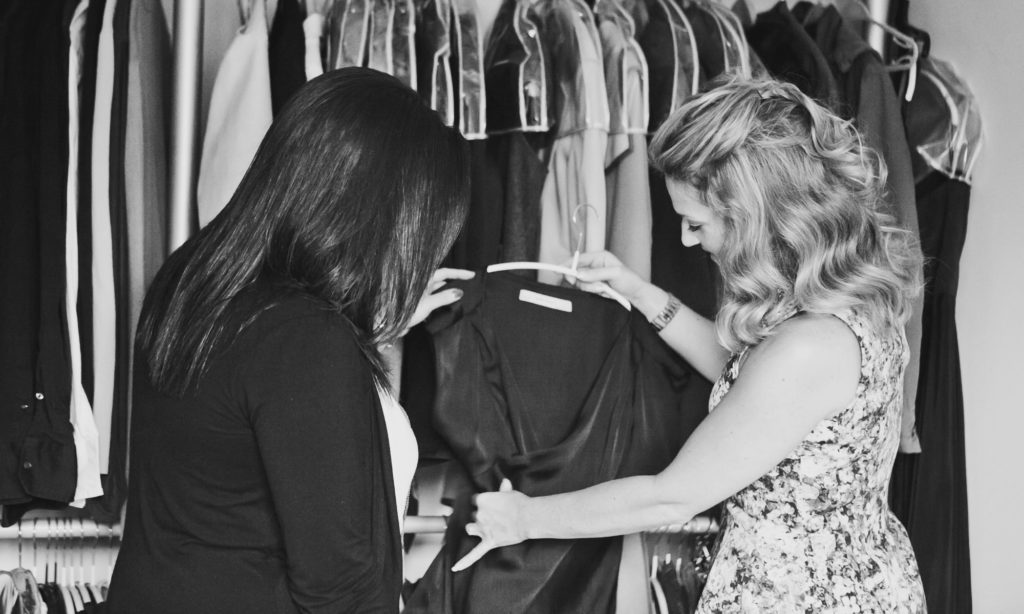
3. Designing your wardrobe space
People can spend thousands of pounds renovating their wardrobes but many a time they don’t actually consider the practicalities of the wardrobe space before they have them designed. If you are reading this book before you start designing your wardrobes or the space for where your wardrobes will be, then this is what you should do.
Evaluate your clothes and the amount that you will need in terms of your wardrobe. It may take some planning but will be well worth the effort. You will most likely, depending on your clothing, need a mixture of rails, shelves and drawers with as much as possible contained within sealed doors to prevent damage by dust and sunlight. Extra storage could be incorporated under the bed also in terms of pull out drawers.
Accessories – Can be kept in drawer space or hanged on the back of doors
Jumpers – 30 – 40cm shelf space or 2.5cm hanging space per item
Trousers and Skirts – 2.5cm of hanging space per item
Lingerie – Can be kept in drawers
Shoes – Should be kept in boxes so ensure you have enough room to stack them
Hanging space – Full length for trousers and long garments; rail for shorter tops and skirts
Jeans – Can be folded on shelves
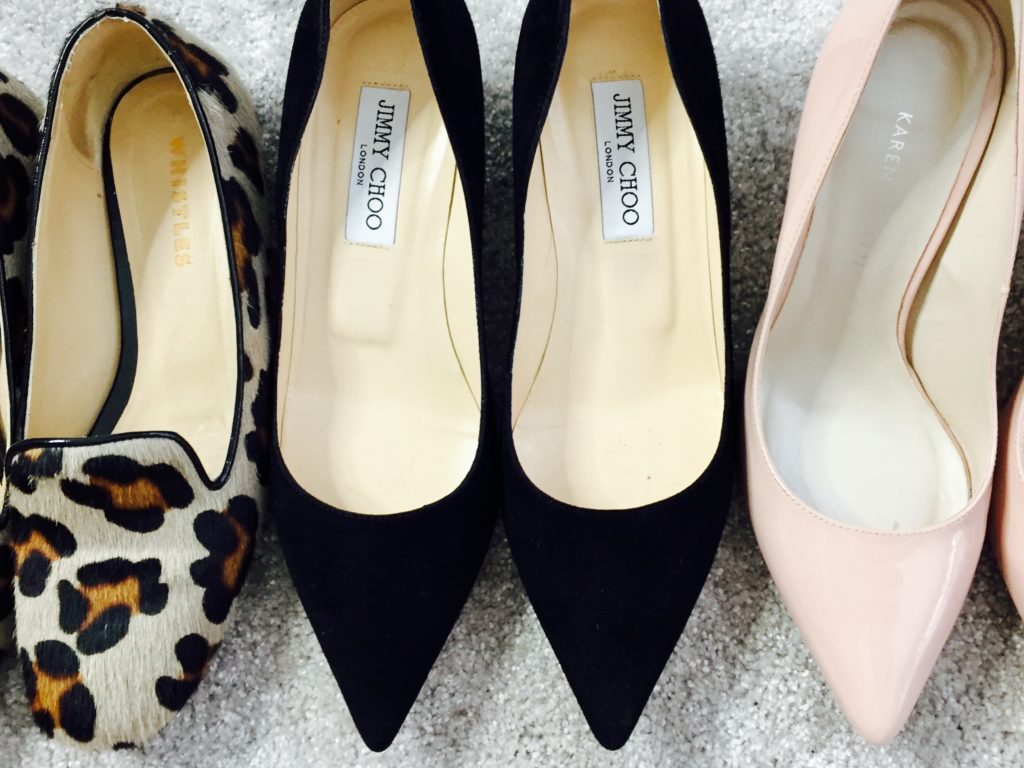
4. Coordination of clothes
It is important to have a structure to your wardrobe to enable you to truly see what is in there. The first thing I do to a client’s wardrobe is organise it in the following way: –
Put like items together in terms of trousers, jackets, tops, skirts, dresses etc. ( I personally prefer to keep all work and weekend tops and bottoms in the same space as it encourages my clients to think outside the box in how to get more price per wear from each item they buy. For example a top they only ever used to wear for meetings at work, actually works great with jeans for the weekend too.
- Categorise in to sleeve lengths or fabric type for example all long sleeve knitwear together, short-sleeve shirts together etc.
- Put evening wear and formal dress separately.
- If you like you can display by colour also.
- The reason I do this is twofold.
Firstly it really does help people to break out of their comfort zones and style ruts by trying new combinations of outfits and mixing and matching. You can actually stand back and get creative because you can see clearly what you have to work with and new ideas spring to mind. Mixing the wardrobe up like this really encourages people to try something new. It’s like when you go to the supermarket and they have moved around the produce in the aisles. You often end up trying a new product whilst looking for your usual brand on your shopping list each week. It breaks you from your habits.
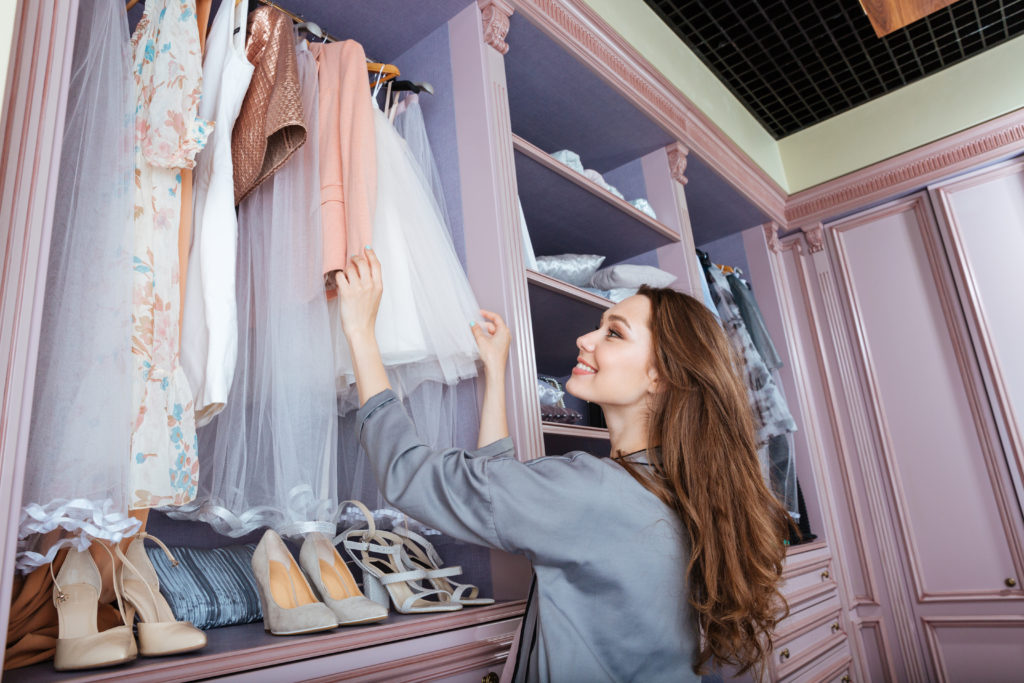
The second reason is that it helps my clients to identify any style ruts or habits they have developed. People are often shocked by how many similarities there are once clothes are grouped together in this way. It really helps to prevent you from wasting money on duplicate items that you already have, like our 23 pairs of jeans lady, as with this example it created a powerful visual image in her mind of all of the jeans sat unworn in her wardrobe.
So we’re now in a place where you can see what you have, it all looks nicely organised and appealing, and you may have had a few insights in to your shopping behaviour. This should put you in a much better position than where you started when you read the first page.
5. Hanging Your Clothes
I recommend using non-slip hangers to stop clothes frustratingly falling off hangers and enable you to finally cut out all of those messy hanger ribbons in your tops and jumpers, which usually end up creeping out on to display when you are wearing them. I advise my clients to never use wire hangers as they damage your clothing if they catch, and they don’t provide any support for your garments. In some cases they cause a lot of beautiful tops to become misshapen. With my jackets and coats, I use stronger wooden hangers and like to use clear shoulder-covers over the top to protect them from getting dusty and looking worn.
I advise my clients to hang trousers by the legs rather than the waistband (if they are unlined). The weight of the waistband helps any creases caused by sitting down to drop out and it actually saves lots of physical space in your wardrobe by hanging them this way. Hanging them by the waistband takes up about twice as much space. I also never fold trousers over hangers as it results in a permanent crease mid-leg, ruining the trousers, not to mention the fact that this uses up even more space in your wardrobe! Preferably hang them full length if you can.
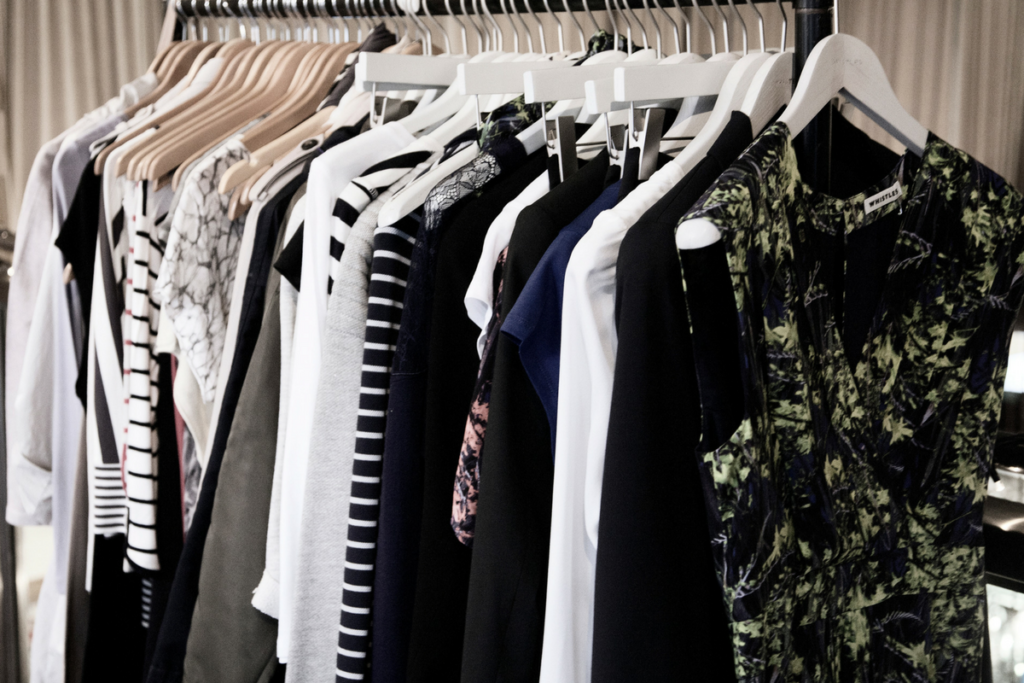
6. Drawer Space
When storing clothing in drawers, ensure the drawers are clean by spraying an antibacterial spray and wiping with a cloth. Line drawers with scented paper or pop in some scented drawer sachets to keep everything fresh and appealing.
Store lingerie, hosiery, belts, bangles, silk scarves, gloves in drawers using drawer separators, which ensure that they won’t be damaged by dust, and makes everything easily identifiable. Also use your drawer space to store lounging around and casual clothing rather than it taking up space in your dress wardrobe. Keep your hanging space for everything you wear outside of the house.
7. Storing accessories
Many of my clients tell me that they like the thought of wearing more accessories but just never seem to get around to it. The reasons become clear when I visit their wardrobe and find a ball of tangled necklaces somewhere in the darkest depths. Get organised now and make life easier for yourself each day. Store necklaces, bracelets and earrings in clear organza bags which will prevent them from getting tangled. The clear organza means that they look appealing to wear, and practically you can see what will accessorise the outfit you have on, quickly and easily. Alternatively place hooks on the wall and hang them up, making a fun wall display.
Get over-the-door hangers or pegs and attach them to your wardrobe doors and hang belts, necklaces and scarves from them. That way they won’t get tangled and you can see what you have to work with. Otherwise use drawer separators and store them in drawers.
Stuff shoes with tissue or newspaper to help them retain their original shape and spray them with protector to stop them from looking shabby after a few wears. Keep shoes in their boxes to protect them from dust damage and stick photographs of the shoes on the front of the boxes so you know what you have. Alternatively use clear shoe boxes that you can stack one on top of the other, which open out from the end, meaning you can get to your shoes without having to disrupt your pile of shoe boxes.
Ideally keep handbags stuffed with paper to prevent them from creasing and losing shape quickly. Spray leather and suede bags regularly with protector to prevent weather damage.
Clutches can be kept in drawers, were as larger bags would be better on shelves but make sure you run a feather duster over them once a fortnight to remove any dust that begins to gather.
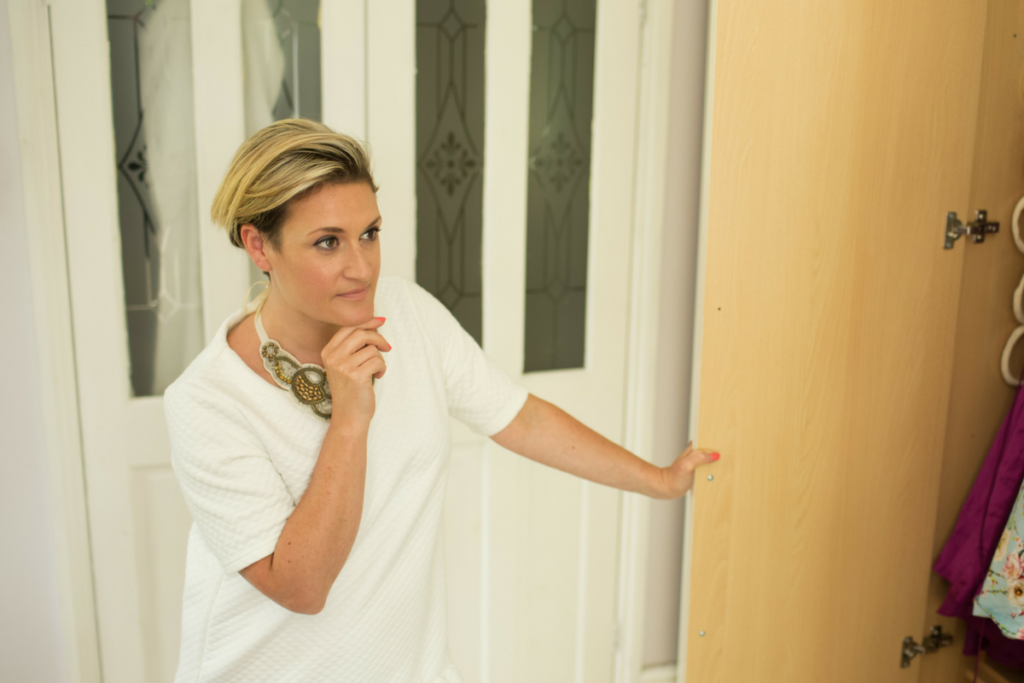
8. Love your wardrobe
Take care of your investment pieces so that you always look immaculate by washing clothes according to instructions and ironing and hanging items up properly before putting them away. It may be worth investing in clothes brushes to keep your wools looking new. Once you start to take more pride in your wardrobe you will find your image will grow to match it. If in reality, you don’t have the time or inclination to do a lot of ironing and dry cleaning, then recognise this before you go shopping to prevent you from buying garments that are high maintenance. Instead opt for fabrics you can machine wash and need little ironing afterwards.
The key to a strong personal brand and a stress free, cost-effective wardrobe is achieving a capsule wardrobe tailored to the needs and wants of your own life and personality. People who always look effortless are people who appreciate their clothes, look after them and have respect for their appearance. They take time and care over their appearance without being vain or narcissistic. Little details get noticed such as the bobbling of a wool jumper or a pair of trousers that need hemming so make sure you wardrobe is well looked after!
Some examples of common mistakes are: –
- Bobbly knitwear
- Dirty shoes
- Scruffy bags
- Ill fitting suits
- Faded fabrics
- Creased clothing
- White garments that have gone off-white
Hopefully now you should feel like you have a whole new wardrobe and it has cost you next to nothing! You will find that by just following these steps it will automatically renew your desire to look good and practically will help you to achieve a more groomed image.
Not only that, but you will find once you are more organised and begin to treat your clothes with respect you will become more creative and confident with your outfit choices and you will be less inclined to go shopping for new garments every week therefore saving money.
If you want a hand organising your wardrobe, finding more ways to mix or match, or weeding out the items that no longer work for you, then Get in Touch to find out more about a Wardrobe Consultation.

Comments +